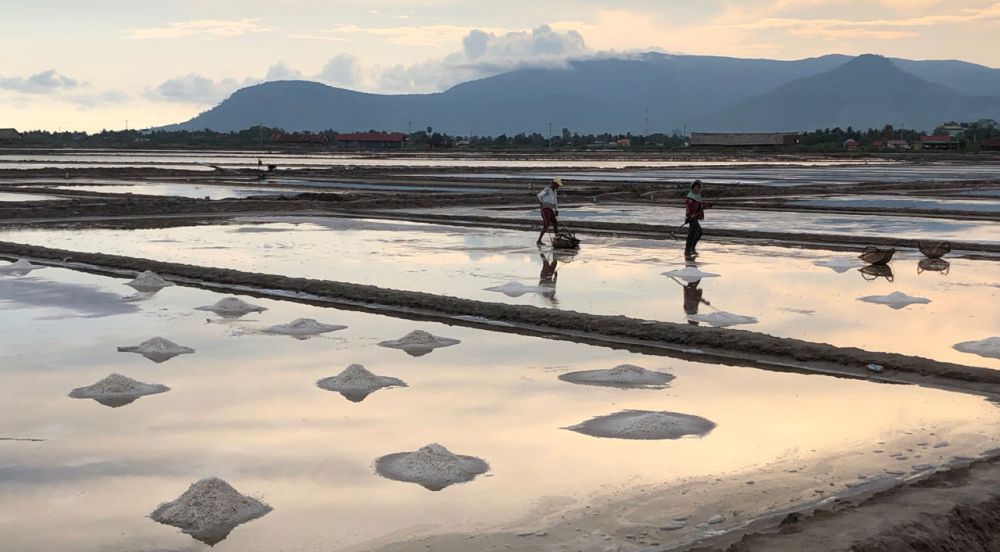

The coastal town of Kampot in Cambodia is renowned for its serene natural beauty, pepper plantations, and colonial architecture. However, one of its lesser-known yet captivating attractions is the sprawling expanse of its salt fields. These mirror-like flats have not only been an integral part of the local economy for generations but have also become an increasingly popular destination for travelers seeking off-the-beaten-path experiences.
Salt production in Kampot dates back to the time when Cambodia was a part of French Indochina. The salt fields were developed to take advantage of the region's high salinity levels and tropical climate, conducive to salt farming. Through the manual labor of local workers, these fields have continuously provided one of the country's most essential minerals.
Post-independence and through the turbulent times of the Khmer Rouge regime, the salt industry faced numerous challenges, but the resilient nature of the locals kept it alive. In recent years, as stability returned to the country, the salt fields have not only regained their role in supporting local livelihoods but have also caught the attention of tourists.
In the present, visiting the salt fields offers a glimpse into the traditional methods of salt collection, which have remained largely unchanged over the years. Tourists often venture to the salt flats to watch the fascinating process of salt farming and to capture stunning photographs of the glistening landscape against the backdrop of Cambodian sky.
Since tourism in the area is a relatively new phenomenon, no formal infrastructure or large-scale tours are focused specifically on the salt fields. Visitors usually explore the salt flats via guided tours from Kampot or as part of broader sightseeing trips around the province. The best time to visit these fields is during the dry season, from December to April, which is when salt production is in full swing.
The rise of eco-tourism and community-based tourism has had a positive impact on places like the salt fields. Tourists are increasingly seeking authentic experiences, which include learning about local trades and sustainable practices. The salt fields align perfectly with these interests, allowing visitors to engage with the local communities and understand their ways of life. Additionally, there has been an increase in the number of photography tours, as the unique landscape of the salt fields provides an excellent subject for professional and amateur photographers alike.
Kampot authorities and local organizations are aware of the delicate balance between tourism and preservation of the salt fields. Efforts are being made to ensure that as the area grows in popularity, the impact on the environment and the local industry is minimized. Visitors are encouraged to respect the fields, support local businesses, and contribute to the region's sustainability.
With its intriguing combination of history, culture, and natural beauty, the salt fields of Kampot are becoming a notable point of interest on Cambodia's tourism map. They provide a unique and enriching experience for all who take the time to explore this natural wonder.